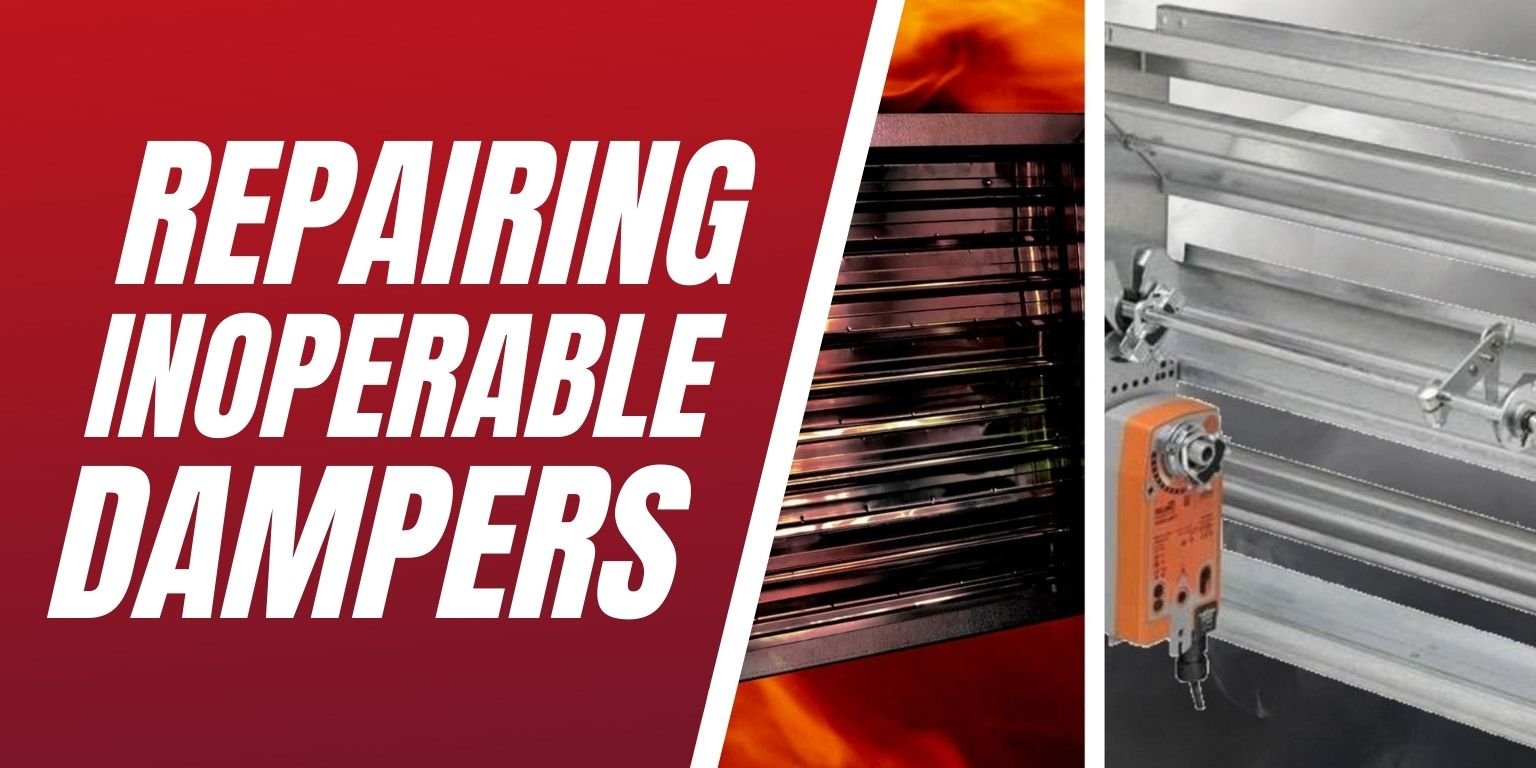
Dampers are fire safety components designed to prevent the spread of fire and smoke in the event of an emergency. They compartmentalize a building by containing the fire and smoke to the place of origin. Typically, a damper can be found in the ductwork, mechanical rooms, wall chases and above the ceilings. Once heat or smoke from a fire is detected, either a fusible link will melt or an actuator will cause the damper to shut. This prevents flames and smoke from passing through the HVAC system and spreading throughout the building. There are two kind of dampers that can be utilized. Static or Dynamic fire dampers.
Static Dampers Vs. Dynamic Dampers
Static fire dampers are designed to cut off airflow as soon as fire is detected. These particular fire dampers would be installed in horizontal barriers. When a fire triggers the alarm system, it will automatically notify your HVAC system to shut off. This causes your HVAC system to stop, and the door of the damper will fall due to gravity, because there is no air pressure within the ducts. Once static fire dampers close, no air can pass through the ducts.
Dynamic fire dampers function similar to static fire dampers; however, they are particularly found within the vertical barriers of your HVAC system. They are spring-loaded, which means the doors of the damper have a spring like action when they are forced to shut. In the event of a fire, the HVAC system where the dynamic fire dampers are placed will continue to operate. Since a dynamic fire damper will need to shut against circulating air, they have built-in fans that turn on to activate the spring-loaded system.
Deficient Damper Repairs
Conducting damper inspections and testing is a very thorough process to ensure compliance and functionality. If not properly inspected and repaired, the chances of a damper working properly during a fire will drop greatly. The NFPA states that if an inoperable damper is found, it must be repaired ‘without delay’.
According to LSS statistics taken from our inspection reports, 22% of dampers will fail during a routine fire and smoke damper inspection. In fact, the top reasons for failures are usually due to the actuators be inoperable or other mechanical issues, such as debris blocking the damper blades from closing. Fire and smoke dampers are designed to help prevent the spread of flames and smoke, but in order for a damper to do its job it must be working properly.
Fire and Smoke Damper Code
Fire Damper - NFPA 80 – Section 19.4 - Each damper shall be tested and inspected one year after installation. The test and inspection frequency shall then be every 4 years, except in hospitals, where the frequency shall be 6 years.
Smoke Damper - NFPA 105 – Section 6.5 - Each damper shall be tested and inspected one year after installation. The test and inspection frequency shall then be every 4 years, except in hospitals, where the frequency shall be 6 years.
Damper Repair Services
Every moment the damper is inoperable is time that building occupants are being put at unnecessary risk. LSS Technicians are equipped with the training and have experience working with all damper makes and models.
LSS damper inspection services provide the following:
- Locate and operate all fire dampers and smoke dampers in your facility. Removing and resetting the fusible link to verify the damper fully closes.
- Mark location of the dampers on drawings, AutoCAD plotting available.
- Manually activate electric smoke dampers and pneumatic smoke dampers to ensure the actuator is operable and fully closes.
If your facility is in need of fire and smoke damper inspection or repairs services, contact us today to schedule an appointment. No risk is worth taking when building occupants lives are at stake- inspect and repair your facility dampers as soon as possible.

